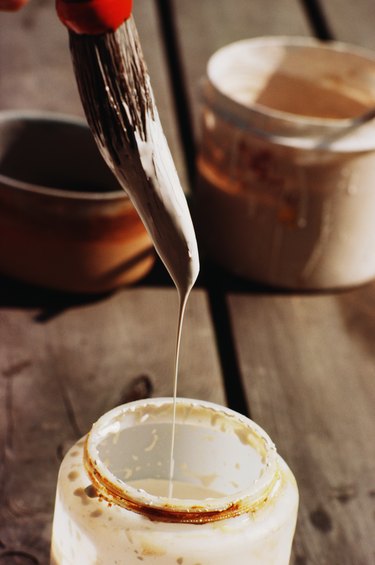
Adding a glaze changes the look of paint without changing the basic color. A glaze is a thin top coat that allows the color underneath to show through. You can apply glazes with a brush, sponge or rag to achieve the look you want. To make a glaze, add the glazing medium to the color of your choice. You control the transparency of the glaze, depending on how much color you add. You can purchase glazing medium as well as premixed glazes at paint stores and some hardware stores.
Paint Colors and Glazes
Video of the Day
You can apply glaze over any paint color, since the glaze is transparent enough to let the original color show through. A darker glaze over a light color adds depth or even an antique look. A light glaze over a darker paint is one way to lighten the color without repainting. You can add the original wall color to the glaze medium to achieve a lighter shade of the same color value. Or choose a contrasting or complementary color. Black, white or metallic shades give different looks when used in glazes.
Video of the Day
Mixing
Your glazing medium has directions for mixing. More glazing liquid and less paint produces a thin, translucent glaze, while less glazing medium produces a thicker, more opaque glaze. You can add water to adjust the consistency of the glaze. You can also purchase premixed glazes. Follow the directions for diluting these glazes.
Application
Wetting your brush, rag or sponge before you apply the glaze keeps the applicator from absorbing too much of the glaze. Apply the glaze to a small area of wall at a time. Dab or roll the glaze onto the wall on top of the original paint color. You want the original color to show through, so you use small amounts of glaze placed randomly on the wall.
Finishing
While the glaze is still wet, you can use a dry paintbrush, rag or sponge to spread the glaze around in a thinner layer. You can even remove some of the glaze by blotting it with a dry rag if you think you've used too much. Special rollers, plastic bags and different types of sponges give different decorative effects when you rub them over the wet glazed surface. After the glaze is dry, you can varnish the surface — a good choice for furniture or cabinets. The varnish creates a harder surface that stands up to wear.